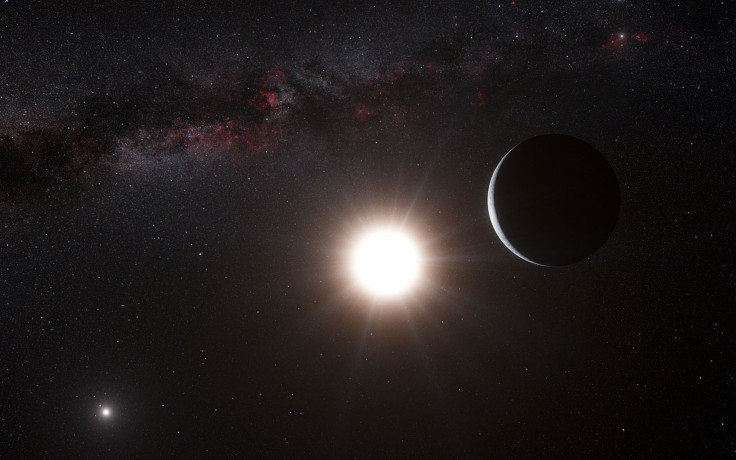Mesmerizing Video Shows 12-Year Timelapse Of 4 Exoplanets Circling Host Star [Watch]
KEY POINTS
- An astrophysicist created a timelapse of a planetary system 133.3 light years away
- The four dots in the video represent the four planets orbiting the star
- '(T)his is the fun part of science': Astrophysicist Jason Wang
Ever wonder what the movement of planets around a star looks like from a new perspective? A rather mesmerizing video shows four exoplanets' movement around their host star.
It was in 2008 when HR8799 made history by becoming the first "extrasolar planetary system" to ever be directly imaged, Northwestern University noted in a news release. At 133.3 light-years away, the system seems far but is still considered to be a part of our "solar neighborhood."
Scientists have been keeping a close watch on the fascinating system, including Jason Wang, an astrophysicist at Northwestern University. Using observations that he and colleagues made with the W. M. Keck Observatory atop Mauna Kea in Hawaii, Wang created a timelapse video that compressed 12 years of observations into a short video.
In the video shared by Wang on YouTube, the dark disk in the center is the host star HR8799. It is much younger than our Sun, with the system forming after the dinosaurs here on Earth had already gone extinct. But it's bigger and five times "more luminous," according to Northwestern University.
Around the star, one can clearly see the four small dots circling it, each being one of the four planets in the system. All four, the university noted, are larger than Jupiter, which is the largest planet in our solar system. The planet nearest to the star takes 45 Earth years to complete a revolution, while the farthest one takes a whopping 500 years.
"This movie was made using real images taken from the telescope," Wang noted on YouTube.
"It's usually difficult to see planets in orbit," Wang reportedly said. "For example, it isn't apparent that Jupiter or Mars orbit our sun because we live in the same system and don't have a top-down view. Astronomical events either happen too quickly or too slowly to capture in a movie. But this video shows planets moving on a human time scale. I hope it enables people to enjoy something wondrous."
The host star appears black in the video because Wang used a process to "suppress" its glare. Otherwise, it would have been much too bright to see the planets around it.
Interestingly, in late 2022, scientists published a study indicating the possible presence of another planet in the system. However, being smaller and closer to the star, it may be harder to spot than the others, reported Science Alert.
As fascinating as it is to watch the timelapse, it's simply for a bit of scientific fun.
"There's nothing to be gained scientifically from watching the orbiting systems in a time lapse video, but it helps others appreciate what we're studying," Wang said in the university release. "In astrophysics, most of the time we are doing data analysis or testing hypotheses. But this is the fun part of science. It inspires awe."

© Copyright IBTimes 2024. All rights reserved.






















